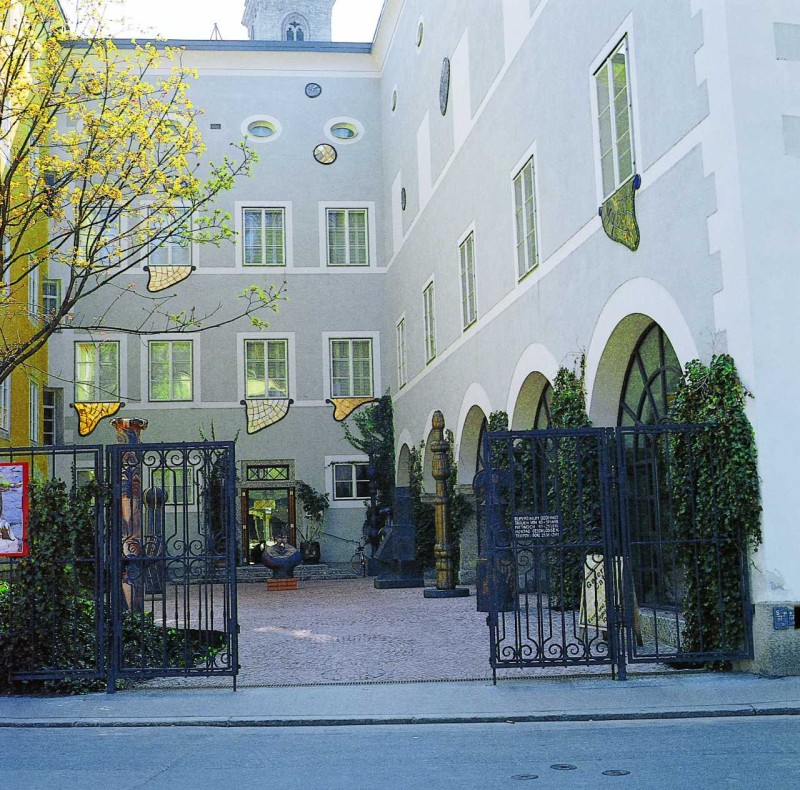Overall concept for the exterior design with "tongue beards" and three tree tenants
Work on site, manifestos, letters, controversies on the question whether an artistic façade design was a violation of the Salzburg law on preservation of the historic part of the city.
"Tongue beards" were only mounted on hooks; tree-tenants were not put in place.
On the occasion of the opening of the Rupertinum modern-art gallery in Salzburg in 1982, Hundertwasser was asked to work out a design for the exterior of the museum. People were to notice from the outside that the historic building had modern art inside. Hundertwasser designed four "tongue beards" from gold and platinum ceramic tiles, which, however, were only on the façade a short time. The Salzburg Historic Preservation Commission had not approved the permanent mounting. The design of the front façade as well as the installation of two tree tenants were also temporarily set aside. However, during a Hundertwasser exhibition in 1987, the tongue beards were mounted in their original position for good. (from: Hundertwasser Architecture, Cologne, 1997, p. 128)
mehr weniger- Das Hundertwasser Haus, Vienna, 1985, p. 146, 150, 151 (c)
- H. Rand, Hundertwasser, Cologne, 1991, p. 206 (c) and ed. 1993, p. 178 (c)
- Hundertwasser Architektur, Cologne, 1996, pp. 132, 133, 312 (c) and ed. 2006, pp. 104-107 (and c), 304 (c), 312
- R. Schediwy, Hundertwassers Häuser, Vienna, 1999, p. 240
- W. Schmied, Hundertwasser 1928-2000, Catalogue Raisonné, Cologne, 2000, Vol. I, p. 358 (c)
- A. C. Fürst, Hundertwasser 1928-2000, Catalogue Raisonné, Cologne, 2002, Vol. II, pp. 1228/1229 (and c)
- Galerie Welz, Salzburg, 2001 (c)
- Hundertwasser, The Green City, Sejong Museum of Art, Seoul, 2016, pp. 174 (and c), 259
